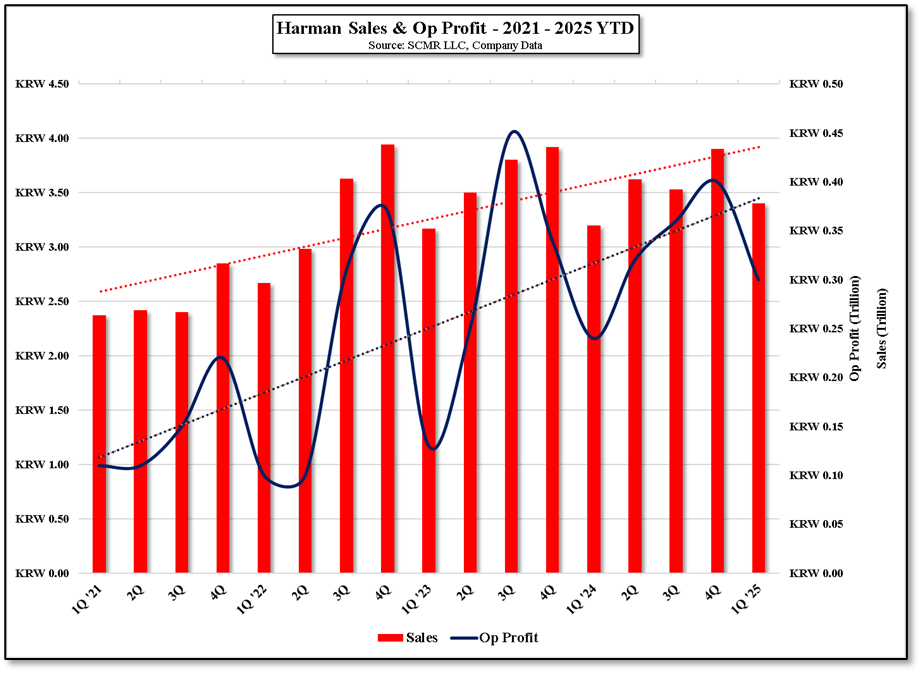Audio Domination
The Harman division of Samsung, while a small part of sales (4.3% in 1Q ’25) and op profit (4.5% in 1Q ’25) is an adjunct to Samsung’s automotive business, which includes OLED displays (Samsung Display (pvt)), infotainment processors, image sensors (driver safety), DRAM & NAND for ADAS, and MLCC (Multi-layer ceramic capacitors). While we don’t have access to detailed data on the non-medical part of Masimo’s business, we know that in 1Q of this year the company produced $146.7m in sales and generated a $6m pre-tax loss[1], somewhat better than 1Q ’24 where sales were $153.2m and generated an $18.5m loss.
Samsung is paying $350m for the Masimo assets, which we believe is between 0.5x and 0.7x annual sales, a substantial discount to more typical 0.6x to 1.1x for these types of companies, although when Masimo purchased what were then the audio assets of Sound United () for $1.025b, the multiple was 1.6x to 1.7x. Current long-term CAGR for segments in the audio space remain high (see below) but we believe those are optimistic, even so it seems Samsung was able to purchase these assets at a significant discount. If they are able to leverage the Masimo businesses as they did with Harman, they should be able to move most of these new brands to profitability as they fall under Samsung’s broad advertising campaigns and substantial reach into Asia, where growth in the audio space is highest.
[1] Excluding all impairment charges.


 RSS Feed
RSS Feed